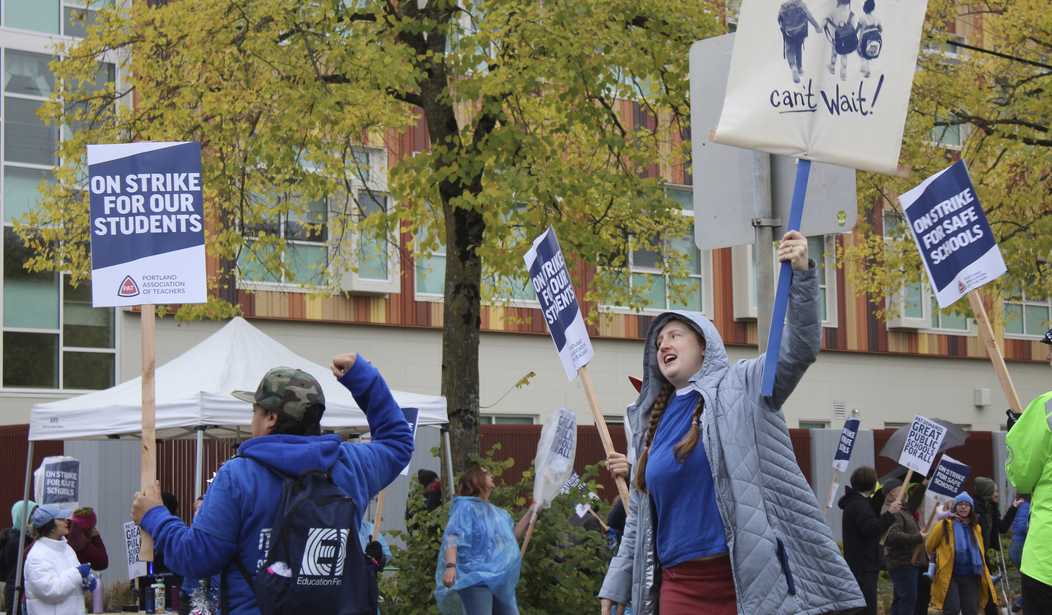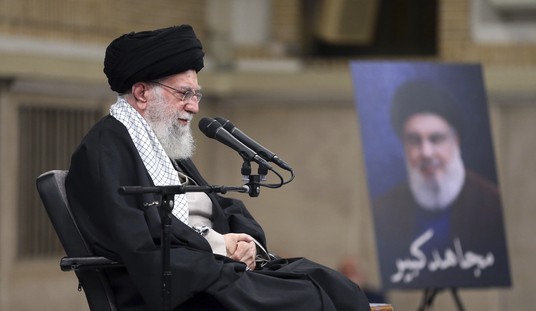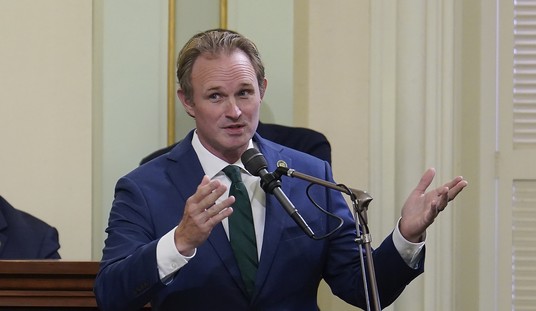Does anyone remember the “Red For Ed” education workers’ strikes of 2018-19 across the United States? The #RedForEd movement began in February 2018 in West Virginia and inspired similar statewide school employee strikes in Oklahoma, Arizona, and Colorado. Smaller strikes were set off in individual districts in Georgia, Kentucky, and North Carolina, and a strike by faculty at Virginia Commonwealth University in Richmond.
The strikes continued into 2019, with United Teachers Los Angeles and teachers walking out in Virginia, Denver, Oakland, and Chicago.
The strikes averaged about two weeks and led to varying levels of success by the respective state and local governments.
This brief history lesson is important, because the #RedForEd movement laid the groundwork in 2018 for what would be the longest-lasting and most disastrous nationwide teacher union strike this country has ever seen.
Meanwhile, unbeknownst to the rest of the world, the first known case of COVID-19 was reported in China in December 2019, quickly spreading worldwide in January 2020.
By Feb. 11, the American Federation of Teachers (AFT) was calling for (translation: dictating) federal guidelines on how schools should handle the virus.
In mid-February, individual schools began closing down “for a few days” to clean the buildings and figure out how to reopen. These school closures were led by New York City – America’s largest school district – and districts in Washington state.
Between mid-February and mid-March, individual school districts began shutting down across the country, but it was Ohio, of all places, that declared the first statewide school closure on March 12.
The dominos began to fall, and by March 16, 27 states and territories had issued orders or recommendations for closing schools to in-person education.
According to Education Week, by March 25, all U.S. public school buildings were forcibly closed.
We all remember what happened after that. Eventually, only Wyoming and Montana reopened their public schools before the end of the 2019-20 school year.
During the summer, there was much wailing and gnashing of teeth by AFT President Randi Weingarten and other prominent teachers’ union leaders over parents’ desperate pleas to get their kids back into the classroom.
Weingarten went so far as to call attempts to reopen classrooms in the fall of 2020 “reckless,” “callous,” and “cruel.”
United Teachers Los Angeles president Cecily Myart-Cruz called California’s reopening plan a “recipe for structural racism.”
Remember, this is the same woman who said, “It’s OK that our babies may not have learned all their times tables … They know the words ‘insurrection’ and ‘coup.’”
Myart-Cruz even accidentally said the quiet part out loud when she admitted, “Education is political. People don’t want to say that, but it is.”
The country remembers all too well what happened during the 2020-2021 academic year: Students in red states, where teachers’ unions don’t typically rule the roost, were able to get back into the classroom at some point during the fall semester and resume (or try to catch up on) their studies.
Meanwhile, students trapped in blue states – or blue cities – effectively run by teachers’ union political power, remained hostages to the demands of even more funding, hazard pay, increased “teacher work periods,” etc. In many cases, the demands even included political concessions like guaranteed housing and expanding Medicare for All.
Don’t forget: Some teachers’ unions had to issue reminders for teachers not to post vacation pictures while the schools were closed.
Because let’s call a spade a spade: The teachers’ unions used the COVID pandemic as history’s largest and longest strike, during which they tried to exact concessions they would have never achieved at a normal negotiating table.
And the #RedForEd campaign set the stage.
After months of forcing children to spend solitary hours a day in front of a screen, parents and politicians were ready to throw huge sums of money at the education system to appease the union bosses holding the keys to the school doors.
Slowly, blue districts began opening during the 2020-21 school year, but many waited until the second semester, keeping students out of school effectively for an entire year or longer.
The Chicago Teachers Union (CTU) held yet another strike just as classes were about to begin in January 2022, keeping students out for another week until further demands were met.
Chicago Mayor Lori Lightfoot begged the union to call off the strike repeatedly during the pandemic, to no avail. And now, she has been replaced by Brandon Johnson, himself a former CTU organizer, who helped set off the 2012 strike.
Unsurprisingly, these school closures have finally begun to show their disastrous results, as the June 2023 release of the National Assessment of Educational Progress (NAEP) revealed the average 13-year-old essentially lost 30 years of mathematical understanding, with scores plummeting to levels not seen since the 1990s.
Further, reading levels dropped four points between 2020 and 2023.
And yet, unfazed by these numbers, teachers’ union strikes continue to this day.
In November 2023, the Portland Association of Teachers in Oregon went on strike for three weeks.
Schools in Newton, Mass., reopened on Feb. 5, 2024, for the first time in more than two weeks after a teachers’ union strike that set off a bitter feud with community parents. The union actually organized a pub crawl during negotiations.
And the St. Paul (Minn.) Federation of Teachers (SPFE) has authorized a strike for Feb. 15.
When they tell you, “It’s for the children,” don’t believe them. The unions are using children for political and emotional blackmail.
Randi Weingarten’s predecessor at the American Federation of Teachers, Albert Shanker, is famously said to have quipped, “When school children start paying union dues, that’s when I’ll start representing the interests of school children.”
It’s time for parents and lawmakers to tell teachers’ unions what they are not accustomed to hearing: “No.”
These teachers’ union strikes are illegal, and they must not be tolerated when they are illegally called.
Ashley N. Varner is vice president of communications at the Freedom Foundation. www.FreedomFoundation.com














Join the conversation as a VIP Member